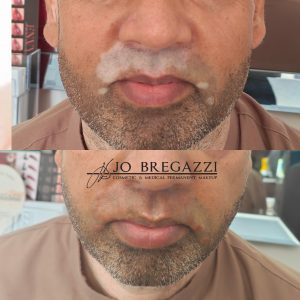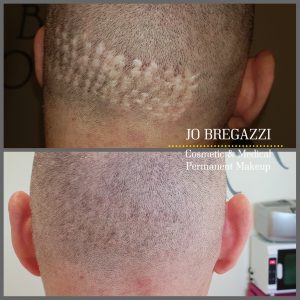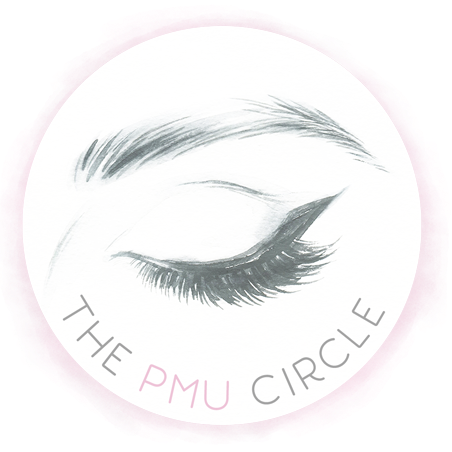Well, it’s also known as ‘Skin Colour Tattooing’, ‘Paramedical Micropigmentation’ or ‘Restorative Tattooing’ and is a very gentle method of placing mineral pigments into the upper dermal layer of the skin to achieve a realistic, natural solution for disguising scars, burns or adding a realistic nipple and areola that was removed or damaged during surgery.
I specialise in medical tattooing, scar camouflage, vitiligo camouflage, nipple and areola tattooing and cleft palate symmetry tattooing.
Medical Tattooing is great for:
Camouflaging most light coloured scar tissue and matching this with the surrounding skin colour.
Surgical scars
Self harm scars
Burns scars
Acne scars
Camouflaging white vitiligo patches
Reconstructing the ‘illusion’ of 3D areolas and nipples after breast surgery.
What are the benefits and risks of scar camouflage using Micropigmentation?
To achieve the most natural results when camouflaging a scar, I have over 30 skin colour pigments to blend, so I will try my absolute best, to realistically match the colour to your surrounding skin.
Micropigmentation or medical tattooing is a non invasive procedure, but I’m using needles to penetrate your skin surface and the treatment is not without risk.
The main risks include;
Slight skin irritation
Uneven pigment colour
Not achieving an exact colour match
Fading of colour over time
Scarring
Pigment migration or spreading
Patients with keloiding problems or who have developed a raised scar after surgery or a tattoo previously, may not be good candidates for this procedure and you can discuss your prior scarring with me at your consultation. Patients with active infections should wait until the infection has cleared before seeking treatment.
If you are choosing to undergo areola and scar tissue tattooing after a breast surgery, you will need to check with your surgeon before having the procedure performed.
Scar tissue accepts implanted pigment very differently than normal tissue and can result in uneven colouring, discomfort and keloiding (raised scarring).
It is usually best to wait until the scar tissue is mature and that can be anywhere from 7 to 12 months.
What factors may affect the results?
There are many variables that can impact on the final results of micropigmentation which is partially determined by variations in skin type, and can also be affected by:
Natural skin tones
Individual healing ability
Medication
Skin characteristics (dryness, oiliness, sun damage, thickness, colour)
PH balance of the skin (acidity)
Alcohol intake
Smoking
Illness
For a consultation or to discuss a scar you would like camouflaged, call me on 01743 246 548 or email me at Jo@jobregazzi.co.uk
My experience in medical tattooing
I qualified as a nurse in 1996 and have vast experience in working with patients who have undergone breast surgery, both pre and post op, as well as on a chemotherapy day unit.
I also have extensive experience working with the skin; with scars tissue, eczema, psoriasis, rosacea, open wounds and ulcers in general surgery, dermatology units and within the field of District Nursing. In addition, I gained 4 years valuable experience working in the specialist field of Head and Neck Surgery.
I now have client referrals from all over the UK and Europe who know that ‘Jo Bregazzi’s’ unique combination of medical experience and artistic talent gives the best possible results.
I offer a range of medical tattoo services for you to choose from, including:
- Scar camouflage
- Nipple and areola reconstruction
- Hair loss camouflage
- Cleft palate surgery scar camouflage and lip symmetry correction
These treatments are great for helping to build your self-confidence, self esteem and body image. Often people choose to have these treatments as they prepare for a summer holiday or a special occasion, such as a wedding.
Prices of these treatments will vary as everybody’s needs are different. For example, small scar camouflage will take less time and sometimes fewer sessions than a large scar. Therefore, a consultation is essential in advance of your treatment.
(Guideline prices are given on the individual treatment pages).











